#albert s. d'agostino
Explore tagged Tumblr posts
Text






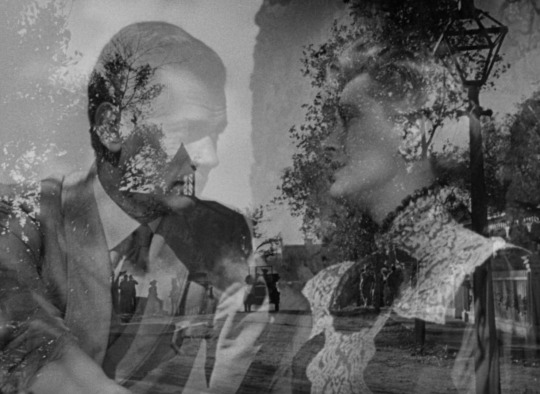


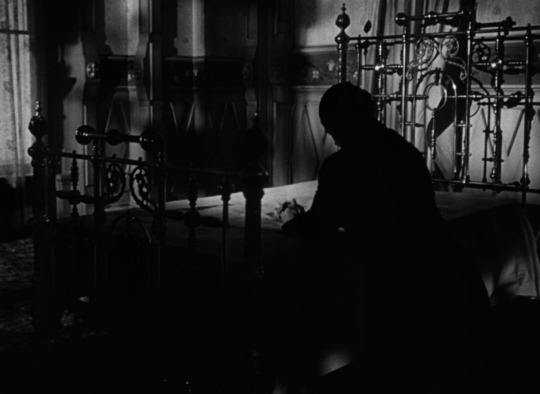
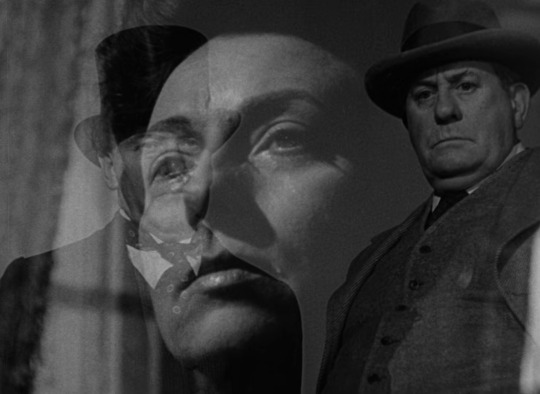
The Magnificent Ambersons (Orson Welles, 1942).
#the magnificent ambersons#orson welles#fredd fleck#robert wise#joseph cotten#dolores costello#anne baxter#tim holt#jack moss#mark robson#stanley cortez#jack mackenzie#Albert S. D'Agostino#Darrell Silvera
79 notes
·
View notes
Text

Born to Be Bad (Nicholas Ray, 1950)
Cast: Joan Fontaine, Robert Ryan, Zachary Scott, Joan Leslie, Mel Ferrer, Harold Vermilyea, Virginia Farmer. Screenplay: Edith Sommer, Charles Schnee, based on a novel by Anne Parrish. Cinematography: Nicholas Musuraca. Art direction: Albert S. D'Agostino, Jack Okey. Film editing: Frederic Knudtson. Music: Friedrich Hollaender.
7 notes
·
View notes
Photo


Out of the Past, 1947
#Out of the Past#Jacques Tourneur#Nicholas Musuraca#Albert S. D'Agostino#Jack Okey#Darrell Silvera#Robert Mitchum#Jane Greer#1947
89 notes
·
View notes
Photo


Los Angeles Noir: Murder, My Sweet (Edward Dmytryk, 1944) | Art direction by Carroll Clark and Albert S. D'Agostino
gif source +
84 notes
·
View notes
Text
The Spiral Staircase (Robert Siodmak, 1945)
Sí, puede decirse, como se ha escrito y se volverá a decir, que The Spiral Staircase congrega casi todos los que (retrospectivamente) cabría considerar como tópicos del cine de terror y de suspense, desde oportunas lluvias y truenos hasta animales con los que se tropieza, desde viento y ventanas que se abren a ramas que se mueven, chirridos y otros elementos típicos de una lista casi interminable, y que casi sin excepción hacen acto de presencia (oportuna y funcional) en esta eficacísima y muy disfrutable película de género más fluctuante que impreciso pero de gran precisión en su factura, realizada con impecable maestría por Robert Siodmak, un enorme técnico que a menudo añadía imaginación e inspiración a su casi invariable competencia y a su no desdeñable sentido plástico.
Y señalaba antes (discretamente) que esos reproches son sobre todo retrospectivos, porque a mi entender su influencia, tanto en películas inmediatamente posteriores (pienso en algunos planos de Notorious, Encadenados, 1946) como en otras ya bastante alejadas en el tiempo (como Psycho, Psicosis, 1960, nuevamente de Hitchcock, o Bunny Lake is Missing, El rapto de Bunny Lake, 1965, de Otto Preminger), sin contar otras menos ilustres y que se limitaron a copiar (a menudo mal, de modo más efectista que efectivo) algunos o muchos de los aciertos de este film de Siodmak en el que, por el contrario, no sobra un plano –salvo unos cuantos, demasiados, del “ojo del asesino en serie”, curiosamente uno de los del propio Siodmak– ni pesa un segundo vacío, ni transcurre un minuto sin que algo nos inquiete o sorprenda, tentándonos a sacar conclusiones que una vez tras otra se revelan precipitadas, sin fundamento, provisionales o dudosas, y estas mismas percepciones erróneas las padecen prácticamente todos los abundantes personajes que pueblan la oscura y tenebrosa mansión de los Warren, una familia poco y mal avenida y no poco desequilibrada, propia de los relatos más o menos góticos, románticos o fantásticos que tanto abundan en la literatura anglosajona.
Porque, conviene advertirlo, aunque formalmente tenga puntos en común con ese género tan frecuentemente practicado por Siodmak, La escalera de caracol no es cine “negro”, sino una película “de época”, temporalmente situada en los primeros años del siglo XX, con calesas, teléfonos y películas que aún resultaban novedosas (como The Sands of Dee, 1912, de D.W. Griffith), y que indirectamente aborda –a través de un personaje que odia y desprecia toda deformidad o defecto físico, naturalmente sin darse cuenta de que mentalmente él está mucho peor que cualquiera de sus víctimas– la política de raza pura y superior y la tendencia a la eugenesia, la esterilización y la eutanasia de todos aquellos que consideraba enfermos o débiles que había predicado y practicado el nazismo (no se olvide que, aunque estrenada en 1946, fue terminada en 1945).
Por último, no conviene olvidar que, si el talento y la precisión de la puesta en imágenes de Siodmak es decisiva en el éxito de la película, es una producción de Dore Schary para la RKO, con el concurso de varios de los técnicos fundamentales de esa modesta productora, como el genial director de fotografía Nicholas Musuraca, el músico Roy Webb, los montadores Harry Gerstad y Harry Marker, los directores artísticos y decoradores Albert S. D'Agostino, Jack Okey y Darrell Silvera, además de contar con el guionista Mel Dinelli (el de House by the River, 1949/50, de Fritz Lang) adaptando (con muchas innovaciones) una novela de Ethel Lina White, la autora de The Lady Vanishes (Alarma en el expreso, 1938) de Hitchcock y de The Unseen (Misterio en la noche, 1944) de Lewis Allen. Sin olvidar a la excelente actriz Dorothy McGuire, en un papel sin diálogo ni voz, y a un montón de competentes secundarios.
Miguel Marías
Cineclub Santander, julio-2020
0 notes
Text
Cat People (Jacques Tourneur, 1942)
Cast: Simone Simon, Kent Smith, Tom Conway, Jane Randolph, Jack Holt. Screenplay: DeWitt Bodene. Cinematography: Nicholas Musuraca. Art direction: Albert S. D'Agostino, Walter E. Keller. Film editing: Mark Robson. Music: Roy Webb.

Simone Simon in Cat People (1942)
167 notes
·
View notes
Photo
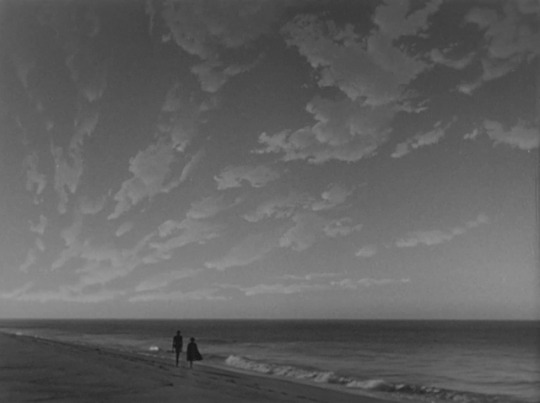

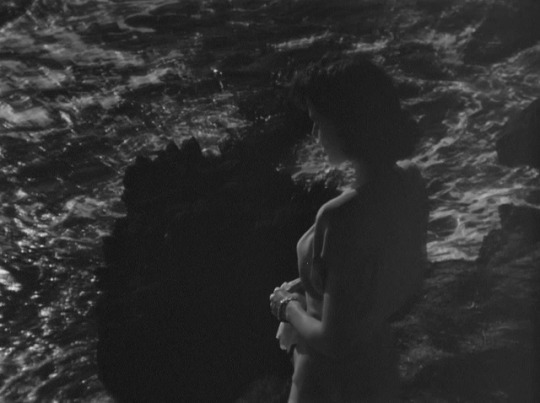


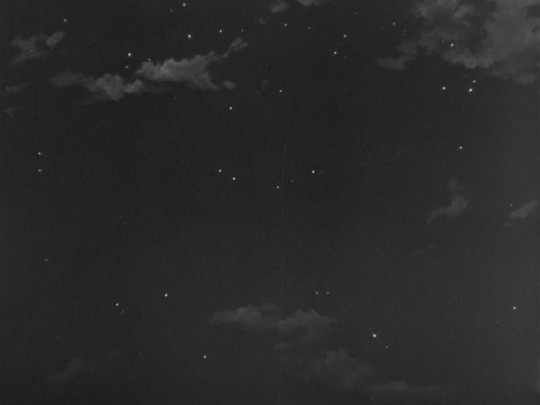
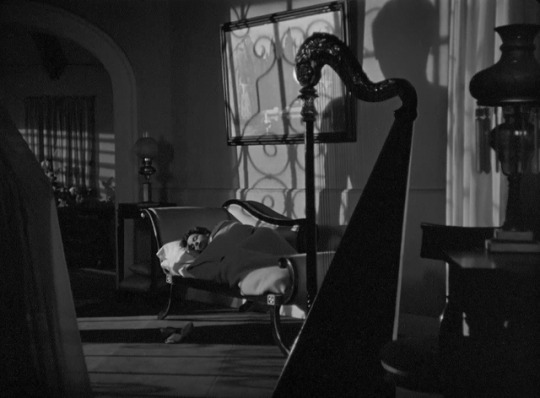



I Walked with a Zombie (Jacques Tourneur, 1943).
#i walked with a zombie#i walked with a zombie (1943)#jacques tourneur#val lewton#j. roy hunt#mark robson#albert s. d'agostino#darrell silvera
69 notes
·
View notes
Text
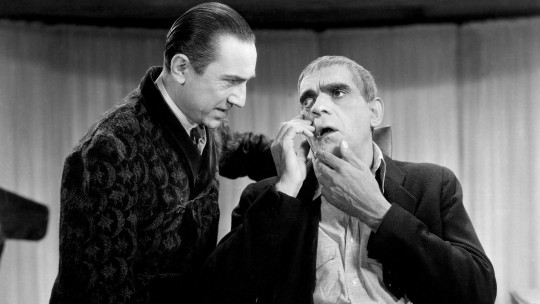
Bela Lugosi and Boris Karloff in The Raven (Lew Landers, 1935)
Cast: Bela Lugosi, Boris Karloff, Lester Matthews, Irene Ware, Samuel S. Hinds, Spencer Charters, Inez Courtney, Ian Wolfe, Maidel Turner. Screenplay: David Boehm. Cinematography: Charles J. Stumar. Art direction: Albert S. D'Agostino. Film editing: Albert Akst. Music: Clifford Vaughan.
The Criterion Channel includes The Raven in its collection of pre-Code horror movies, but in fact the movie started filming after the Production Code was introduced, and director Lew Landers had to negotiate over details in the script. The enforcers were nervous about "excess horror," and in particular wanted the film not to show any details of the operation that Dr. Vollin (Bela Lugosi) performs on Bateman's (Boris Karloff) face. Even so, censors took aim at what they called "horror for horror's sake," and The Raven was banned in several countries. The defense from Universal Studios that the movie was a tribute to Edgar Allan Poe impressed nobody. It's still a fairly creepy movie, largely because the filmmakers managed to include some torture devices from Poe's stories like "The Pit and the Pendulum." The poem "The Raven" mainly gives Dr. Vollin an excuse to explain to everyone that the bird is a symbol of death, but it also prompts a rather silly dance recital by the object of Vollin's obsession, Jean Thatcher (Irene Ware). Vollin is a neurosurgeon who saves Jean's life after she's injured in an automobile accident. She's engaged to another surgeon, Dr. Halden (Lester Matthews), and when her father, Judge Thatcher (Samuel S. Hinds), stymies Vollin's interest in Jean, Vollin takes his revenge. He has a collection of torture devices and an old house outfitted with gimmicks like a bedroom on an elevator and a secret room whose walls close in on people trapped in it. Karloff's Bateman is a bank robber who escaped from San Quentin and is on the run, so in the guise of giving him plastic surgery to change his identity, Vollin instead disfigures him, and then makes him play servant at a house party to which Halden, the Thatchers, and various other guests are invited. Madness ensues. The movie's chief virtue is brevity -- it runs 61 minutes -- so it never gets tedious even though it also never gets either scary or plausible.
2 notes
·
View notes
Text

George Brent, Paul Lukas, and Hedy Lamarr in Experiment Perilous (Jacques Tourneur, 1944)
Cast: Hedy Lamarr, George Brent, Paul Lukas, Albert Dekker, Carl Esmond, Olive Blakeney, George N. Neise, Margaret Wycherly. Screenplay: Warren Duff, based on a novel by Margaret Carpenter. Cinematography: Tony Gaudio. Art direction: Albert S. D'Agostino, Jack Okey. Film editing: Ralph Dawson. Music: Roy Webb.
Cary Grant was the original choice to play the male lead in Experiment Perilous and Gregory Peck was the second. If the role had gone to either of them, the film might be remembered as more than just the other gaslighting movie of 1944, but it has been eclipsed by George Cukor's Gaslight. The part of the psychiatrist Huntington Bailey went to the stolid old reliable George Brent. Dr. Bailey gets caught up in the drama of the Bederaux family when he has a chance encounter on a train with the slightly dotty Clarissa (Cissie) Bederaux (Olive Blakeney), who tells him she's writing the biography of her brother Nick (Paul Lukas), who has a beautiful wife named Allida (Hedy Lamarr). Bailey is intrigued, but not much more, until a mixup in luggage puts him in possession of one of Clarissa's bags. That, and the enthusiasm of his artist friends Clag (Albert Dekker) and Maitland (Carl Esmond) for Allida's beauty, draws him into the Bederaux circle and arouses his suspicions that Allida is not the mentally fragile woman that her husband and others say she is. When he learns that Cissie has died of a heart attack, he opens her valise and finds the manuscript of her biography and her diary, confirming his suspicion -- and putting him in jeopardy. This is solid melodrama stuff, and director Jacques Tourneur, who directed the Val Lewton romantic horror movies Cat People (1942) and I Walked With a Zombie (1943), knows just what to do with it. He's hindered a little by an over-complicated screenplay based on a novel by Margaret Carpenter, which necessitates a lot of flashbacks and switches in point of view, so the film doesn't proceed as smoothly as it might. But he maintains the right atmosphere as the plot moves to its resolution, which involves literally lighting gas as well as gaslighting. There's a goopy happy-ending coda to the main story that strikes the wrong note for the film, but Experiment Perilous deserves to be known as more than an also-ran.
4 notes
·
View notes
Text

Simone Simon in Cat People (Jacques Tourneur, 1942)
Cast: Simone Simon, Kent Smith, Tom Conway, Jane Randolph, Jack Holt. Screenplay: DeWitt Bodene. Cinematography: Nicholas Musuraca. Art direction: Albert S. D'Agostino, Walter E. Keller. Film editing: Mark Robson. Music: Roy Webb.
Cat People is so fraught with subtext about the fear of female sexuality that it's amazing that critics once treated it as a mere "horror movie," even while admitting that it was an effective one. Starting with the image drawn by Irena (Simone Simon) of a panther impaled on a sword, which is a version of the even more phallocentric statue in her apartment, it's clear that director Jacques Tourneur, screenwriter DeWitt Bodeen, and producer Val Lewton have more on their minds (or subsconsciousnesses) than just spooking the audience. But then subtext was about the only way filmmakers could get away with sex under the Production Code, even when the point is that Irena and her husband (Kent Smith) are not having sex because she's afraid she'll rip him to shreds if they so much as kiss. I have some reservations about the horror films produced by Lewton, one of the few producer-auteurs, partly because they're often more fun to talk about than to watch.
3 notes
·
View notes
Text
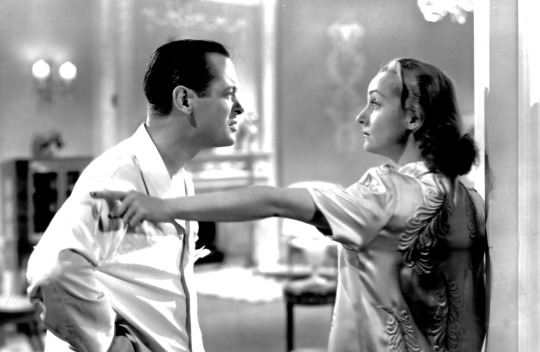
Ray Milland and Carole Lombard in Mr. & Mrs. Smith (Alfred Hitchcock, 1941)
Cast: Carole Lombard, Robert Montgomery, Gene Raymond, Jack Carson, Philip Merivale, Lucile Watson, William Tracy, Charles Halton, Esther Dale. Screenplay: Norman Krasna. Cinematography: Harry Stradling Sr.. Art direction: Van Nest Polglase, Albert S. D'Agostino. Film editing: William Hamilton. Music: Edward Ward.
If Alfred Hitchcock's name were not attached to Mr. & Mrs. Smith, would we remember it at all today? Perhaps as one of the last films of Carole Lombard -- it was the last released before her death in January 1942, though the posthumously released To Be or Not to Be (Ernst Lubitsch, 1942) was the last one she completed filming. Or perhaps as one of the lesser examples of the romantic/screwball comedy genre that flourished in the 1930s and '40s. But even hardcore Hitchcockians find it difficult to fit it into the director's canon. Hitchcock had said he wanted to work with Lombard, and when Lombard liked Norman Krasna's story and screenplay, the teaming was put into play. Lombard and Robert Montgomery play Ann and David Smith, who discover that their three-year-old marriage is invalid, owing to a legal technicality. Complications ensue, especially when David doesn't rush into remarriage as quickly as Ann likes. She kicks him out of the apartment, and then his law partner, Jeff Custer (Gene Raymond), makes a play for her affections. Lombard is very much at home in this kind of comedy, and Montgomery is good at it too. The weak link is Raymond, who has the kind of role, the "other man" patsy, at which actors like Ralph Bellamy in The Awful Truth (Leo McCarey, 1937) and His Girl Friday (Howard Hawks, 1940) and John Howard in The Philadelphia Story (George Cukor, 1940) excelled. Raymond plays his part with a pinched, rather prissy manner that hardly sits well with the fact that he's supposed to have been the best fullback at the University of Alabama. In fact, the character seems to have been coded as latently gay: Witness Lombard's reaction when Ann learns that he decorated his own very tasteful apartment. Much of the film skirts around matters forbidden by the Production Code, including whether the now-unmarried Smiths should sleep together, which a director like Lubitsch or Hawks would have treated with more wit and finesse than Hitchcock does. This was only his third film made in Hollywood, and it was his first with a completely American setting; the first two, Rebecca (1940) and Foreign Correspondent (1940), were set in Europe and England. His unfamiliarity with American idiom shows up particularly in his treatment of the Alabama football jock Jeff and his parents (Philip Merivale and Lucile Watson), proper Southerners who are shocked at the suggestion that Ann has been sleeping with David. But whenever Hitchcock is working with Lombard and Montgomery, especially using Lombard's great gift for uninhibited physical comedy, the movie comes to fitful life.
2 notes
·
View notes
Text

Frances Dee and Bruce Cabot in Finishing School (Wanda Tuchock, George Nicholls Jr., 1934)
Cast: Frances Dee, Bruce Cabot, Ginger Rogers, Billie Burker, Beulah Bondi, John Halliday, Sara Haden, Helen Freeman, Marjorie Lytell, Adalyn Doyle, Anne Shirley, Irene Franklin, Jane Darwell. Screenplay: Wanda Tuchock, Laird Doyle. Cinematography: J. Roy Hunt. Art direction: Albert S. D'Agostino, Van Nest Polglase. Film editing: Arthur P. Schmidt.
Finishing School is a reverse Cinderella story in which poor little rich girl Virginia Radcliff (Frances Dee) finds her prince in Ralph "Mac" McFarland (Bruce Cabot), an unpaid intern at a children's hospital who supports himself by working as a waiter in a Manhattan hotel. Virginia has two wicked stepmothers: her real mother, the snobbish socialite Helen Radcliff (Billie Burke), and the headmistress of the finishing school Helen sends her off to, Miss Van Alstyne (Beulah Bondi). If there's a fairy godmother in the film, it's Virginia's wisecracking roommate, known as Pony (Ginger Rogers), who helps turn the shy and proper Virginia into something of a rebel. The movie is one of those Depression-era fables in which the tables are turned on the wealthy, and also one of the last movies to be released before the Production Code clamped down on the depiction of premarital sex. It earned a condemnation from the Catholic Legend of Decency for just that. Virginia and Mac do it in one of those pan-to-the-window scenes in which we see the snow outside filling up their footprints. And from what follows, including Virginia's refusal to see the school physician, we know the consequences even though nobody ever says "pregnant" out loud. The denouement is precipitated by a literature teacher who tells Virginia and her class that Anna Karenina's suicide was the only possible response to her breach of proper behavior, which is all that the school really teaches. It's a not-unwatchable little film that gets a nice boost occasionally from Rogers's snappy delivery of her lines, but otherwise is mainly a document of the era in which it was made.
1 note
·
View note
Text

Dick Powell and Jane Greer in Station West (Sidney Lanfield, 1948)
Cast: Dick Powell, Jane Greer, Agnes Moorehead, Tom Powers, Gordon Oliver, Steve Brodie, Guinn "Big Boy" Williams, Raymond Burr, Regis Toomey, Burl Ives. Screenplay: Frank Fenton, Winston Miller, based on a novel by Luke Short. Cinematography: Harry J. Wild. Art direction: Albert S. D'Agostino, Feild M. Gray. Film editing: Frederic Knudtson. Music: Heinz Roemheld.
Station West is an odd duck of a Western. Oh, there's the usual stagecoach and saloon stuff, some gunplay, and a big fistfight. But it also has the kind of snappy dialogue you associate with film noir, and nobody is exactly what they seem. It's also threaded through with songs performed by an uncredited Burl Ives, who plays a hotel owner who's also a kind of Greek chorus, commenting on the action with his ballads. One of the refrains of his songs, "A man can't grow old where there's women and gold," is sung often enough that we get the point. The women are played by Jane Greer and Agnes Moorehead, and they give no quarter. Greer is Charlene, known as Charlie, and she owns most of the business in the town, but not the gold mine, which belongs to Mrs. Caslon, played by Moorehead. And then a stranger named Haven (Dick Powell) comes to town. He's really an undercover agent from military intelligence investigating the deaths of two soldiers who were guarding a shipment of gold from Mrs. Caslon's mine that got hijacked. Powell's character is a boots-and-sixguns variation on his Philip Marlowe in Murder, My Sweet (Edward Dmytryk, 1944), quick with a quip, catnip to the women, able to take a licking and keep on sleuthing. Somehow this mash-up of film noir and horse opera works. There's nice camera work, too, from Harry J. Wild, who knows how to use shadows effectively.
0 notes
Photo

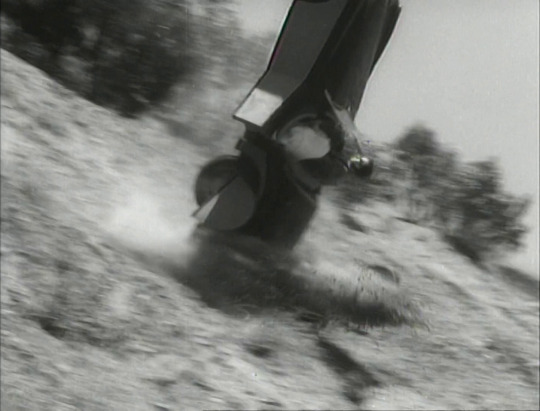
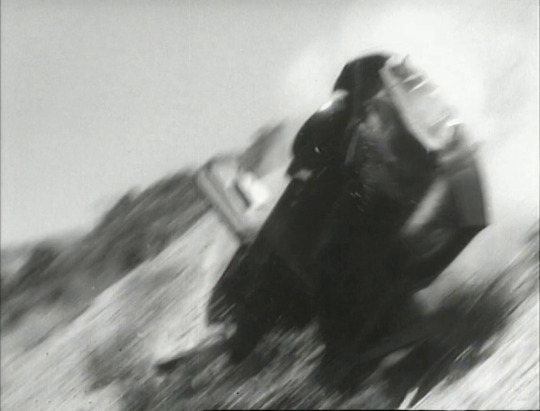
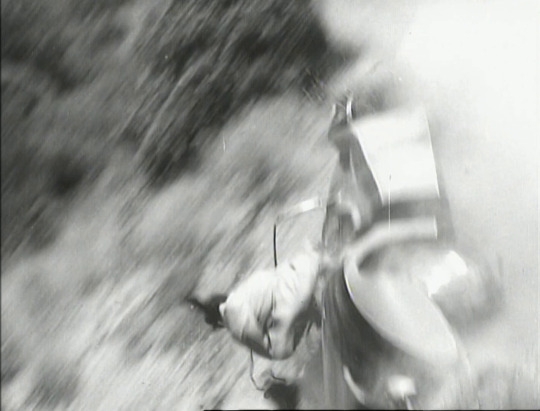

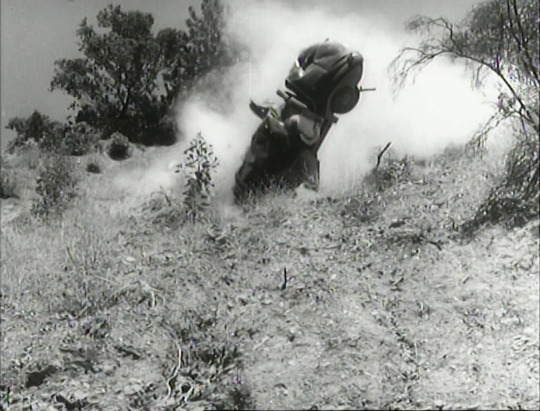

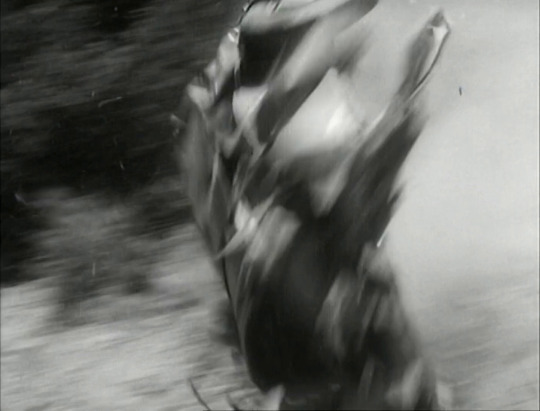
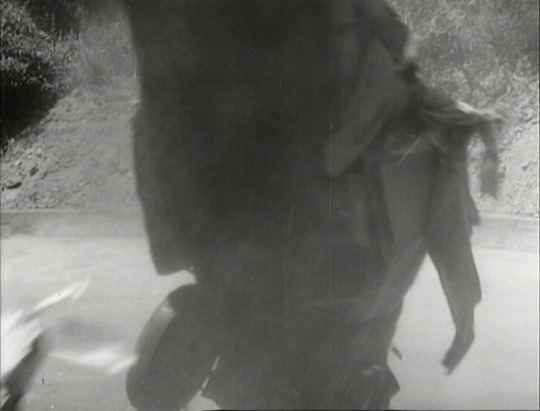
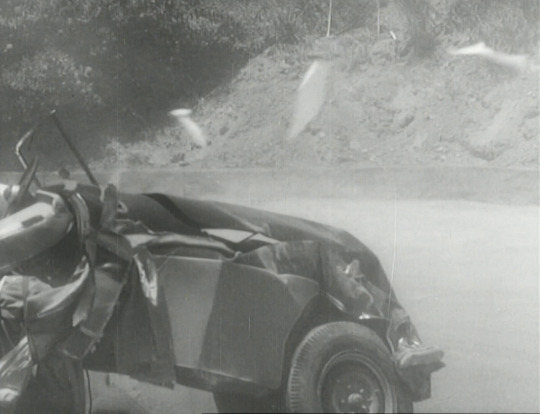
Angel Face (Otto Preminger, 1952).
#angel face#angel face (1952)#otto preminger#harry stradling sr.#frederic knudtson#carroll clark#albert s. d'agostino
26 notes
·
View notes
Photo










I Walked with a Zombie (Jacques Tourneur, 1943).
#i walked with a zombie#i walked with a zombie (1943)#jacques tourneur#frances dee#edith barrett#darby jones#j. roy hunt#mark robson#albert s. d'agostino#walter e. keller
130 notes
·
View notes
Photo










The Ghost Ship (Mark Robson, 1943).
#the ghost ship#the ghost ship (1943)#mark robson#donald henderson clarke#leo mittler#skelton knaggs#nicholas musuraca#john lockert#albert s. d'agostino#walter e. keller#claude e. carpenter#darrell silvera#edward stevenson
39 notes
·
View notes